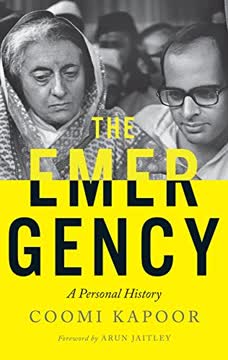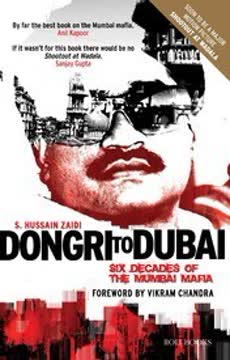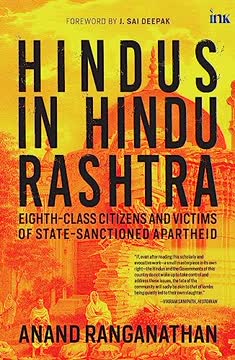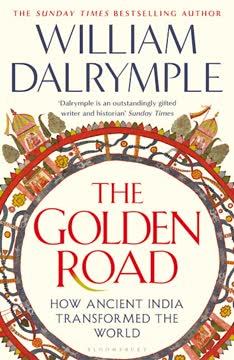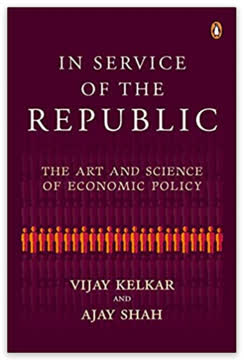Key Takeaways
1. The Emergency: A Swift Descent into Constitutional Dictatorship
The most alarming aspect of the Emergency, as this book so vividly narrates, was that Indira Gandhi managed to demonstrate how easy it was to misuse the Constitution and convert democracy into a constitutional dictatorship.
Misuse of power. Coomi Kapoor's book highlights how Indira Gandhi exploited constitutional provisions to transform India into a dictatorship, revealing the fragility of democratic institutions when faced with determined authoritarianism. The Emergency, declared on June 25, 1975, ostensibly to counter internal disturbances, became a tool for suppressing dissent and consolidating power.
Key events:
- Mass arrests of opposition leaders under the Maintenance of Internal Security Act (MISA)
- Imposition of press censorship, effectively silencing critical voices
- Suspension of fundamental rights, leaving citizens without legal recourse
Echoes of history. Kapoor draws parallels between Indira Gandhi's actions and Adolf Hitler's rise to power, noting the misuse of constitutional provisions to proclaim a state of emergency and suppress opposition. This comparison underscores the dangers of unchecked power and the importance of safeguarding democratic principles.
2. Silencing Dissent: The Muzzling of the Media
During the Emergency the press ‘was asked to bend and it chose to crawl’.
Censorship and control. The Emergency saw a systematic dismantling of press freedom, with the government imposing strict censorship and controlling the flow of information. Newspapers were forced to toe the government line, and dissenting voices were silenced through arrests and intimidation.
Methods of control:
- Electricity to newspaper offices was cut off
- Censorship guidelines prohibited any criticism of the government
- Foreign correspondents were expelled for reporting unfavorable news
Resistance and capitulation. While some publications, like the Indian Express and The Statesman, offered resistance, many others succumbed to government pressure, highlighting the vulnerability of the media in the face of authoritarianism. This period serves as a stark reminder of the importance of a free and independent press in holding power accountable.
3. The Midnight Knock: Arrests and the Erosion of Rights
The terror of being picked up by the police without any reason summed up the Emergency for us.
Arbitrary detentions. The book vividly recounts the arbitrary arrests and detentions that characterized the Emergency, with political opponents and ordinary citizens alike being rounded up without due process. The Maintenance of Internal Security Act (MISA) was amended to allow for indefinite detention without disclosing the reasons for arrest, effectively suspending fundamental rights.
Conditions in jail:
- Overcrowded and unsanitary conditions
- Inadequate medical care
- Denial of parole even for family emergencies
Human cost. Kapoor details the physical and psychological toll of imprisonment, with detainees subjected to harsh conditions and denied basic rights. The stories of those who suffered during this period serve as a powerful indictment of the Emergency regime.
4. Sanjay's Ascent: The Rise of Dynastic Politics and a Coterie
But Indira Gandhi was one step ahead of Hitler—she used the Emergency to make her son Sanjay Gandhi her political heir and successor.
Sanjay's influence. The Emergency saw the meteoric rise of Sanjay Gandhi, Indira's younger son, who wielded immense power despite holding no official position. Sanjay surrounded himself with a coterie of loyalists who implemented his policies with ruthless efficiency.
Key figures in Sanjay's coterie:
- Navin Chawla, Lieutenant Governor's secretary
- Bansi Lal, Chief Minister of Haryana
- V.C. Shukla, Minister of Information and Broadcasting
- R.K. Dhawan, Additional Private Secretary to Indira Gandhi
Dynastic ambitions. Kapoor argues that Indira Gandhi used the Emergency to groom Sanjay as her political heir, marking a shift towards dynastic politics. This decision had far-reaching consequences for Indian democracy, as Sanjay's policies and actions were often driven by personal ambition rather than the public good.
5. Total Revolution Interrupted: JP's Vision and the Opposition's Struggle
‘Vinaash kale vipareeta buddhi’ (When the moment of destruction is at hand reason abandons the mind).
JP's movement. Jayaprakash Narayan (JP), a revered Gandhian leader, spearheaded a movement against corruption and authoritarianism, calling for a "Total Revolution" to transform Indian society. His campaign gained momentum in the lead-up to the Emergency, posing a significant challenge to Indira Gandhi's government.
JP's arrest and the opposition's response:
- JP was among the first to be arrested, along with other opposition leaders
- The opposition struggled to mount a unified resistance in the face of repression
- Many opposition leaders were demoralized and succumbed to government pressure
JP's legacy. Despite the setbacks, JP's vision of a more just and equitable society continued to inspire many, and his movement laid the groundwork for the eventual defeat of Indira Gandhi's government. His words, "When the moment of destruction is at hand reason abandons the mind," encapsulate the tragic turn of events during the Emergency.
6. The Five-Point Programme: Coercion and Control
The goals set included bringing down the prices of essential commodities, cutting down on government expenditure, declaring bonded labour illegal, setting up special squads for cracking down on conspicuous consumption, bringing in special legislation for the confiscation of smugglers’ properties, increasing power production, developing the handloom sector, and so on.
Sanjay's agenda. Sanjay Gandhi's five-point programme, focusing on family planning, tree plantation, slum clearance, abolition of dowry, and eradication of illiteracy, became a symbol of the Emergency's excesses. Unlike the Twenty Point Programme, Sanjay's initiatives were implemented with ruthless efficiency, often through coercive measures.
Family planning atrocities:
- Forced sterilization campaigns targeted marginalized communities
- Incentives and disincentives were used to pressure people into undergoing sterilization
- Reports of botched surgeries and deaths due to negligence
Slum clearance and displacement. The "beautification" of Delhi involved the demolition of slums and unauthorized settlements, displacing thousands of people and leaving them without adequate housing or support. These actions sparked widespread resentment and contributed to the growing opposition to the Emergency.
7. The Enigmatic Empress: Indira's Character and Motivations
‘I have always been very quiet and when I was younger people thought there was no fire in me. But this fire has always been there, only nobody saw it except when it flared.’
Complex personality. Kapoor delves into the complex character of Indira Gandhi, portraying her as a leader driven by both a deep sense of insecurity and an unwavering determination to maintain power. Her difficult childhood and strained relationships with family members shaped her political outlook and contributed to her authoritarian tendencies.
Key traits:
- Suspicious and manipulative
- Ruthless in dealing with opponents
- Deeply protective of her son Sanjay
Justifications for the Emergency. Indira Gandhi claimed that the Emergency was necessary to save India from chaos and anarchy, but Kapoor suggests that her actions were also motivated by a desire to protect her own political future and secure Sanjay's position as her heir. This highlights the dangers of conflating personal ambition with the national interest.
8. Ramnath Goenka's Stand: A Lone Battle for Press Freedom
I had two options: to listen to the dictates of my heart or my purse. I chose to listen to my heart.
Defiance against oppression. Ramnath Goenka, the owner of the Indian Express, emerged as a champion of press freedom during the Emergency, defying government censorship and intimidation to publish critical reports. His courageous stand serves as a testament to the importance of an independent media in holding power accountable.
Government's tactics:
- Withdrawal of advertising revenue
- Harassment of staff and management
- Attempts to take over the newspaper
Goenka's unwavering commitment. Despite facing immense pressure, Goenka refused to compromise his principles, demonstrating a rare commitment to journalistic integrity. His battle against the Emergency regime inspired many and helped to keep the flame of resistance alive.
9. The Election Gamble: Miscalculations and a Stunning Reversal
In a battle the antagonists’ lines of supply have to be cut off, and this is what censorship has done.’
Misjudging the mood. Indira Gandhi's decision to call elections in March 1977 was a gamble based on flawed intelligence and a misreading of the public mood. She believed that the Emergency had been successful in restoring order and that she would be rewarded with a renewed mandate.
Factors contributing to the Congress defeat:
- Widespread resentment over the Emergency excesses
- The formation of a united opposition front
- The defection of Jagjivan Ram, a key dalit leader
A stunning outcome. The election results revealed the depth of public anger and the extent to which the Emergency had alienated voters. Indira Gandhi and Sanjay Gandhi both lost their seats, and the Congress suffered a crushing defeat in north India, marking a watershed moment in Indian political history.
10. The Aftermath: Justice, Accountability, and the Return of the Dynasty
This book brings to life the events and the atmosphere of those dark nineteen months in telling and compelling detail.
Seeking accountability. The Janata government established commissions to investigate Emergency excesses, but its internal divisions and political infighting hampered its ability to bring those responsible to justice. The Shah Commission's report, however, provided a detailed account of the abuses of power that had occurred during the Emergency.
The return of Indira Gandhi. Despite the widespread condemnation of her actions, Indira Gandhi made a remarkable comeback in the 1980 elections, capitalizing on the Janata government's failures and the public's disillusionment. This underscores the cyclical nature of politics and the enduring appeal of strong leadership, even after periods of authoritarian rule.
Legacy and lessons. The Emergency remains a cautionary tale about the fragility of democracy and the importance of safeguarding civil liberties. Kapoor's book serves as a valuable reminder of the need for vigilance and accountability in the face of unchecked power.
Last updated:
FAQ
1. What is The Emergency: A Personal History by Coomi Kapoor about?
- Personal and political narrative: The book offers a detailed, firsthand account of the Emergency period in India (1975-1977), blending personal experiences with a broader political history.
- Focus on key figures: It examines the roles of Indira Gandhi, Sanjay Gandhi, opposition leaders like Jayaprakash Narayan (JP), and influential journalists.
- Chronicle of events: The narrative covers the imposition of Emergency, censorship, mass arrests, suspension of rights, and the eventual restoration of democracy.
- Based on rich sources: Kapoor draws from interviews, archival material, and her own experiences as a journalist during the Emergency.
2. Why should I read The Emergency: A Personal History by Coomi Kapoor?
- Firsthand perspective: Kapoor’s direct involvement as a journalist provides unique insights into the political and social turmoil of the era.
- Comprehensive and balanced: The book is well-researched, using interviews and archives to present a nuanced view beyond simplistic good-versus-evil narratives.
- Reveals hidden details: It uncovers the inner workings of Indira Gandhi’s administration, Sanjay Gandhi’s influence, and the opposition’s underground resistance.
- Contextual understanding: The book includes timelines and forewords that help readers grasp the causes, consequences, and legacy of the Emergency.
3. What are the key takeaways from The Emergency: A Personal History by Coomi Kapoor?
- Democracy’s vulnerability: The Emergency exposed how easily democratic institutions and civil liberties can be undermined by unchecked power.
- Role of dissent: The importance of resistance, both from the press and political opposition, is highlighted as crucial for safeguarding democracy.
- Personal and political consequences: The period left lasting scars on Indian politics, shaping the careers and reputations of many leaders.
- Lessons on accountability: The book underscores the dangers of authoritarianism and the need for vigilance in protecting democratic norms.
4. What triggered the Emergency according to The Emergency: A Personal History by Coomi Kapoor?
- Allahabad High Court judgment: The immediate cause was the 1975 judgment disqualifying Indira Gandhi for electoral malpractices, threatening her political survival.
- Rising opposition and unrest: Student protests, strikes, and the Total Revolution movement led by JP created a climate of instability.
- Pre-planned crackdown: Evidence suggests plans for mass arrests and Emergency rule were in place before the official trigger, as revealed by Siddhartha Shankar Ray’s correspondence.
- Indira Gandhi’s response: Rather than risk political defeat, she chose to impose Emergency, suspending civil liberties and arresting opponents.
5. How did the Emergency affect the media, as described in The Emergency: A Personal History by Coomi Kapoor?
- Severe censorship: Newspapers faced pre-censorship, power cuts, and strict government control, with only a few like the Indian Express resisting.
- Government manipulation: The Ministry of Information and Broadcasting, influenced by Sanjay Gandhi, dictated news content and suppressed dissenting voices.
- Suppression of free press: Independent publications were shut down or forced underground, and foreign correspondents were expelled.
- Symbolic resistance: Some newspapers used blank editorials and subtle critiques to protest censorship.
6. What was Sanjay Gandhi’s role and influence during the Emergency, according to Coomi Kapoor?
- De facto power center: Sanjay Gandhi, though unelected, wielded enormous influence, forming a parallel secretariat and controlling key appointments.
- Enforcer of controversial policies: He aggressively pushed the Five-Point Programme, including family planning and slum clearance, often using coercive methods.
- Media and administrative control: Sanjay’s coterie managed censorship and administrative actions, bypassing legal norms and intimidating opponents.
- Source of excesses: His ruthlessness and unchecked authority were major factors in the abuses of the Emergency period.
7. What was the Five-Point Programme initiated by Sanjay Gandhi, and what were its consequences?
- Aggressive family planning: The programme enforced sterilization targets through state machinery, often using coercion and intimidation.
- Slum clearance and beautification: Large-scale demolitions displaced thousands, with little regard for legal procedures or human suffering.
- Public backlash: The excesses of the programme led to widespread resentment and contributed to the downfall of Indira Gandhi’s government.
- Symbol of authoritarianism: The Five-Point Programme became synonymous with the terror and arbitrariness of the Emergency.
8. How were political opponents and dissenters treated during the Emergency in The Emergency: A Personal History by Coomi Kapoor?
- Mass arrests: Thousands of opposition leaders, activists, and critics were detained without charges under preventive detention laws like MISA.
- Harsh prison conditions: Detainees faced overcrowding, poor sanitation, torture, and denial of basic rights, with some kept in solitary confinement.
- Suppression of dissent: The government used police intimidation and legal loopholes to silence opposition, with little judicial recourse.
- Impact on opposition unity: Despite repression, leaders like JP worked to unite the opposition, eventually forming the Janata Party.
9. What was the significance of the Supreme Court’s habeas corpus judgment during the Emergency?
- Suspension of rights: The Supreme Court ruled that even illegally detained persons could not approach courts during the Emergency, effectively legalizing arbitrary detention.
- Justice Khanna’s dissent: Justice H.R. Khanna’s lone dissent upheld the right to judicial review, highlighting the judgment’s threat to democracy.
- Erosion of safeguards: The ruling marked a key moment in the breakdown of constitutional protections and emboldened the regime’s authoritarianism.
- Long-term impact: The judgment remains a cautionary tale about the judiciary’s role in protecting civil liberties.
10. How did Ramnath Goenka and the Indian Express resist the Emergency, as described by Coomi Kapoor?
- Defiant editorial stance: The Indian Express continued to publish subtle critiques and blank editorials despite censorship and government pressure.
- Legal and financial battles: Goenka fought government attempts to take over the newspaper through tax raids, withdrawal of advertisements, and pre-censorship orders.
- Symbol of press freedom: The Express became a beacon of resistance, inspiring other journalists and citizens to stand up for free speech.
- Personal risk: Goenka’s commitment to press freedom came at great personal and financial cost.
11. How did the Emergency come to an end, and what were the immediate political consequences according to The Emergency: A Personal History by Coomi Kapoor?
- Announcement of elections: Indira Gandhi unexpectedly called for elections in early 1977, signaling a shift in strategy amid growing opposition.
- Janata Party victory: The united opposition won a landslide, with Indira and Sanjay Gandhi suffering personal defeats.
- Restoration of democracy: The end of the Emergency marked a dramatic rejection of authoritarianism and a reaffirmation of democratic values.
- Aftermath: The Janata government faced internal conflicts, and Indira Gandhi eventually returned to power, illustrating the volatility of Indian politics.
12. What is the legacy of the Emergency period as reflected in The Emergency: A Personal History by Coomi Kapoor?
- Test of democracy’s resilience: The Emergency demonstrated both the vulnerability and strength of India’s democratic institutions.
- Enduring political impact: The period shaped the careers and reputations of many leaders and influenced party dynamics for decades.
- Lessons on power and accountability: Kapoor’s account highlights the dangers of unchecked authority and the importance of dissent in a democracy.
- Public memory and civil liberties: The scars of the Emergency continue to influence debates on governance, civil rights, and the role of the press in India.
Review Summary
The Emergency: A Personal History is praised as a gripping account of India's darkest period post-independence. Readers appreciate Kapoor's personal perspective and detailed narrative of the 21-month Emergency, highlighting its atrocities and impact on democracy. The book is lauded for its readability, thorough research, and ability to educate younger generations about this crucial historical event. While some note a slight bias, most find it an essential read for understanding Indian political history and the fragility of democratic institutions.
Similar Books
Download PDF
Download EPUB
.epub digital book format is ideal for reading ebooks on phones, tablets, and e-readers.
